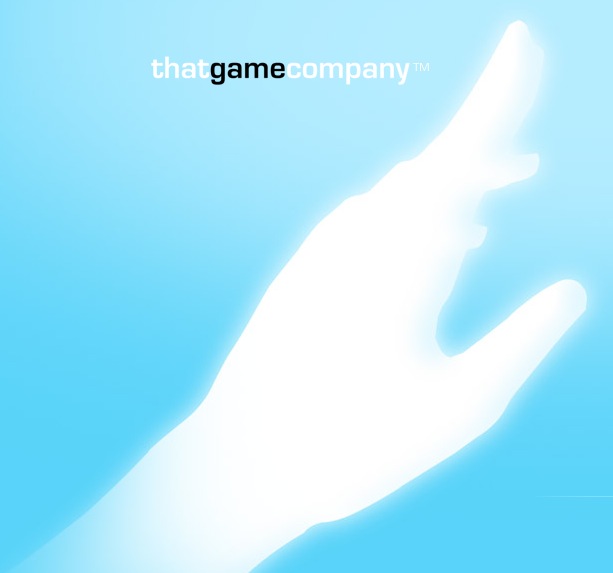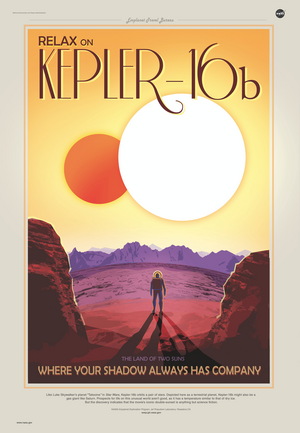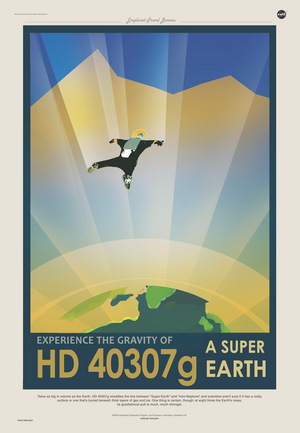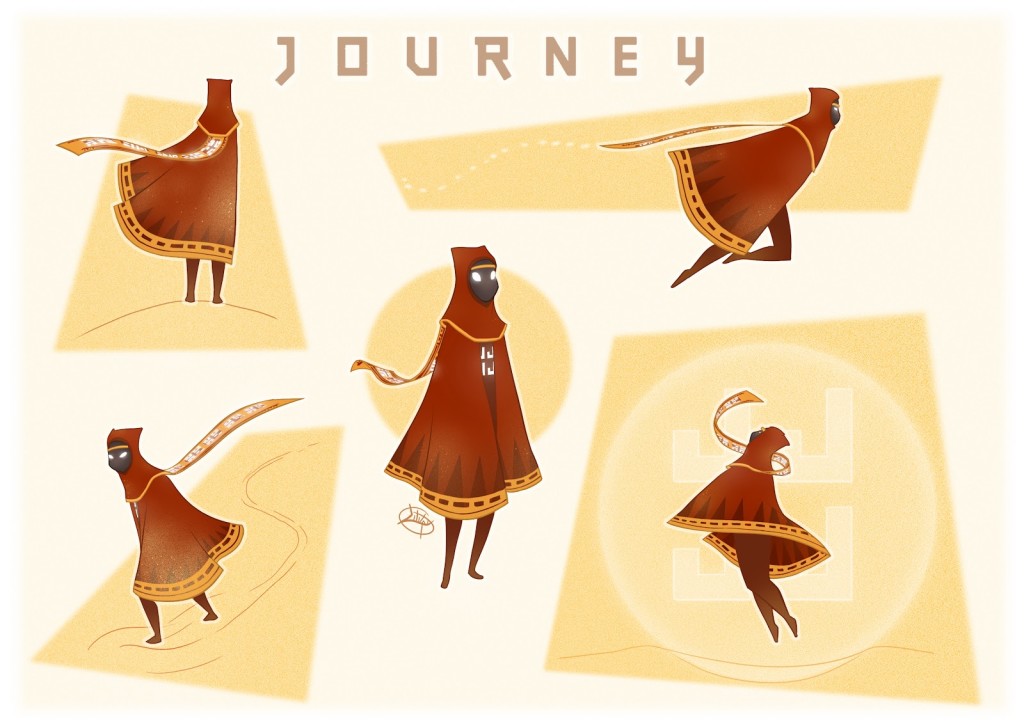-

-

-

-

-

-

-

-

-

-

-
-

-

-

-

-

-

-

-

-

-

-

-

-

-

-

-

-

-

-

-

-

-

-

-

-

-

-

-

-

-

-
-

-

-
 TOTW: Google's Project Ara Modular Phone May Be The Future Of SmartphonesOctober 30, 2014
TOTW: Google's Project Ara Modular Phone May Be The Future Of SmartphonesOctober 30, 2014 -

-

-

-

-

-

-

-

-

-

-

-

-

-

-
-
-

-

-

-

-

-

-

-

-

Posts tagged computers
Robin – Reddit’s Second Annual Large-Scale Social Experiment
08 years
Many early adopters of the Internet will remember the chat rooms of the ‘90s, small group messaging “rooms”, almost like group texts on modern smartphones. But these group messaging sites paired you with complete strangers, where people from across the world could discuss whatever they like. Chat rooms on websites like AOL rose to their peak prominence in the 1990s, but then gradually faded in popularity until their eventual demise a decade later.
Some have tried to resurrect the chat room on the modern Internet without much success; the Facebook-bought app Rooms attempted such a resurrection in 2014, but ended up being removed from the App Store a year later in October of 2015 due to a lack of popularity. Chat rooms seem to have fallen out of fashion, other platforms for Internet-wide communication rising to the top such as YouTube, Snapchat and Reddit. And yet, in an interesting moment of irony, Reddit, one of the websites that helped kill off chat rooms, brought them back for a short 8-day social experiment. Called Robin, as in round robin, the experiment was Reddit’s second attempt at leveraging their site’s large user base to learn more about people’s behavior on the Internet, the power of community, and simply how people would react to an interesting chat room mechanism.
For the uninitiated, Reddit can be fairly intimidating, a place where anyone with access to the Internet can interact and discuss any topic they please. While that may not sound all too enticing to you, the way Reddit is organized makes it much more palatable for the average person. Let’s say you’re interested in astronomy and would love to find a community of other astronomy enthusiasts. Just head over to /r/astronomy, the “subreddit” dedicated to everything to do with astronomy and astronomy news. On the astronomy subreddit, or a subreddit on any other topic, Reddit users can post links on that topic and hope they get upvoted to the front page. Every subreddit is a popular meritocracy, comprising primarily of a home page constantly updated with the newest, most popular links and/or discussions posted on that subreddit.
Robin isn’t a subreddit, or a feature on subreddits; actually, it started as just a button (not THE button, last year’s social experiment). When you clicked the button, depicting the outline of a Robin, you are brought to a page with one more button, this time saying “participate”. Upon clicking that button, you were brought into a chat room with you and one other random Reddit user. You and that Reddit user could chat for 1 minute about whatever you would like, and then you would have to vote on one of three options in the top right-hand corner of the page: stay, grow, or abandon.
Think of Robin as creating a village. If the majority of you and your randomly-assigned village-mates vote grow, then your “village” is merged with one of the same size. If the majority chooses stay, you build a wall around your village and plan to stay there for “life,” meaning you get a private subreddit made for that group that only the group members can join. And finally, if the majority votes abandon, the village is immediately closed and you can start again from the beginning, and if a couple of individuals vote to abandon then they alone are kicked out of the village. (in case you didn’t catch on, village means chat room in this analogy)
This would seem like a pointless voting mechanism if not for the fact that Robin in based on a chat room, a place where anyone can talk to anyone else in the world. Every time your group grows, the time you get to talk to your fellow “village-mates”, from 1 minute with 2 people, 3 with 4 people, 7 with 8 people, 15 with 16 people, and 30 with any higher number of participants. This means that, despite what you may think of people on the Internet, you can actually have interesting conversations. In my experience, as I spent a fair amount of time playing Robin when it was still running from April 1st to April 8th, the conversations you have change topic very fast and yet are still very entertaining and fun.
On top of that, the very mechanism of growing, staying, or abandoning sparks conversation, users campaigning for different votes. In one of my chats, I was part of an “ABANDON2016” campaign, as an overwhelming number of memes had flooded our chat. We were successful, to the dismay of the meme makers. In fact, for the people who vote stay, it’s not actually because they want a private subreddit with a bunch of random people who share most likely no interests; it gets boring after a day.
The conversations you have getting people to stay is the fun part, the part that makes it all worth it. The reason Robin was more than just a chat room was because it gave every single member of the chat a sense of attachment, to the people in the chat, and to the chat itself. Because it takes 30 minutes to get to the voting point of a 16 person chat, you have spent quite a while on any certain chat. Also, because of the way the chats merge, everyone feels like they had a part in starting what would later become a forum for global communication. In only a couple chats, I talked to people, usually men in their 20s, from places such as Turkey, the Netherlands, England, Israel, and more. This is the reception I got when I announced I had to leave a chat room, after participating in the election for 15-20 minutes prior:
(my username is aaron21morgan, and the bottom half of the running chat is mostly my fellow chat-mates’ response to my parting announcement)
In the end, after about a week up and running, Robin shut down just as The Button did a year ago. The largest chat ended up having 5,000+ people, and was apparently so big that the Reddit servers were having trouble just keeping it afloat. Now that the fun is over, we can look back on Robin as an interesting experiment and an entertaining game. We don’t often think about the fact that the Internet really does connect everyone in the world, and just the act of talking to a handful of them in a chat room can make that connection feel all the more real. Robin may have been a stupid Internet chat room to outsiders, but to those participated it helped humanize the average Internet commenter we encounter on an everyday basis. It may just be me, but having a simple conversation with someone thousands of miles away, even just for a couple of minutes, brings back the sense of wonder about the capabilities of the Information Age from back when the Internet was first being brought into mainstream culture.
The Simulation Argument Part #2 – The Hypothesis Explained
09 years
This is the second article in a two-part FFtech series on The Simulation Argument. If you haven’t already read the first article go HERE before reading the following.
In the previous FFtech article on the Simulation Argument, we established that Bostrom’s statement that the first proposition is false is a reasonable assumption. Just to remind you, these are the propositions, and one has to be true:
#1. Civilizations inevitably go extinct before reaching “technological maturity,” the time at which civilization can create a simulation complex enough to simulate conscious human beings. Meaning: no simulations.
#2. Civilizations can reach technological maturity, but those who do have no interest in creating a simulation that houses a world full of conscious humans. Meaning: no simulations. Not even one.
#3. We are almost certainly living in a simulation.
Now, on to the second postulate. Since that we have decided that there are quite likely alien civilizations in the universe that have developed an ability to create “ancestor simulations”, as Bostrom likes to call them, the second postulate says that the alien civilizations just have to interest in creating a simulation of fully conscious human beings. Most likely, a civilization creating a simulation of how humans lived before they reached “technological maturity” will be future humans, as it is less likely that we will have met an alien civilization before develop the capacity to create an ancestor simulation of our own, as the distance from another habitable stars is simply too far away.
(ABOVE: Some very cool illustrations of hypothetical travel ads for habitable planets found with the Kepler satellite)
However the simulation is created, it seems much more likely that at least one alien starts a simulation. If current trends continue, such as the a definitive interest in our ancestors shown in the multitude of historical studies, there will be plenty of people who would like to simulate how their ancestors lived. I know that I would find a simulation of a Greek town fascinating, for example. The idea that not a single person would want to create a simulation seems unlikely, and so therefore the second postulate is likely false.
So, Bostrom’s first postulate is probably false, and the second postulate is just plain unlikely by human (and, more arguably, alien) nature. Based off of that, do we now live in a simulation? Well, not yet. Just because and ancestor simulation exists doesn’t mean that you’re living in it. First, you have to consider the virtual “birth rate” of these simulations. Bostrom also supposes that it takes a lot more effort and time to create a real human than it would a virtual one once a sufficiently advanced technology is developed. Therefore, the ancestor simulation (or simulations) could have many orders of magnitude more virtual humans living inside it then are actual humans, living outside the computer and controlling the simulation. So, if there are thirty virtual humans for every real human, or even numbers up to 1,000 virtual humans to every human, that means the probability that you are one of the few “real” humans rather than a simulated human is very low.
And that, my friends, is the simulation hypothesis.
Of course, there are many assumptions made here, some clear and others subtle, some of which could be used to attack Bostrom’s argument. For instance, one of the major assumptions that Bostrom makes is what he calls “Substrate Independence”. Substrate Independence is the idea that a working, conscious brain can, as he writes in his original paper,
” …supervene on any of a broad class of physical substrates. Provided a system implements the right sort of computational structures and processes, it can be associated with conscious experiences. It is not an essential property of consciousness that it is implemented on carbon-based biological neural networks inside a cranium: silicon-based processors inside a computer could in principle do the trick as well.
Basically, Substrate Independence is the idea that consciousness can take many forms, only one of which is carbon-based biological neural networks. This form of Substrate Independence is pretty hard grasp, which is why Bostrom argues that the full form of Substrate Independence isn’t actually needed for an ancestor simulation. Really, the only form of Substrate Independence needed to create an ancestor simulation is a computer program running well enough to pass the Turing Test with flying colors.
Besides Substrate Independence, most of the rest of the Simulation Argument is fairly simple. Since we have already deduced that there is likely to be at least one ancestor simulation in existence, the likelihood that we are living in that simulation is pretty high. The logic behind this is that the ancestor simulation doesn’t have a set birth rate that can’t be manipulated. The simulation could have as many simulated people in it as they want – though this is stated as obvious, when it is also debatable — and there would be many orders of magnitude more simulated people than actual human people not in a simulation, and even more if there are multiple simulations running at the same time. The present-day parallel is to online video games MMORPGs, which are constantly getting bigger and bigger, with many more characters made in those games than real humans born every second.
Obviously, this argument is very speculative. Substrate Independence, ancestor simulations, the whole thing; it just all seems too far-fetched to be true. And, after all, Bostrom isn’t a computer scientist, he’s works at the Faculty of Philosophy in Oxford. But, that doesn’t mean his argument is false by nature, as in his original paper he goes into incredible detail about computing power, Substrate Independence, and even creates a mathematical formula for calculating the probability we live in a simulation. In fact, if we want to get technical, Bostrom categorizes what I have told you so far as the Simulation Hypothesis, and the full Simulation Argument being the probability equation Bostrom created, some “empirical” facts, and relation to unrefutable philosophical principles. If you want to read Bostrom brilliant albeit a little wordy paper, click HERE.
To sum it up: a man named Nick Bostrom created a series of logical “propositions” that, when examined closely, seem to suggest that there is a very high probability that we are living in a simulation. In fact, the probability is so high that to close his paper, Bostrom writes:
“Unless we are now living in a simulation, our descendants will almost certainly never run an ancestor simulation.”
You may take knowing this however you want. Personally, I think the simulation argument is one of the coolest things to ever come out of philosophy. And if it’s true, that we live in a simulation, that only makes it cooler. After all, we will never know for sure whether we live in a simulation or not, and either way, it doesn’t affect your life the slightest. You have no choice but to continue living your life as you did, maybe in a simulation, maybe not. All this shows is that as technology continues to develop at a rapid pace, we are getting closer and closer to even the wildest of science fiction technologies to become a reality.
Sources: https://www.youtube.com/watch?v=nnl6nY8YKHs http://www.simulation-argument.com/simulation.htmlThe Simulation Argument Part #1 – The First Proposition
09 years
This is the first article in FFtech’s series on The Simulation Argument. Enjoy, and check back for the following articles in the upcoming weeks.
*Warning – the following is incredibly speculative.*
Life seems real, right? This sounds like an obvious statement – of course life is real. That’s what life is. We are living, breathing humans, going about our daily lives, playing our part in the grand theater of life.
Or so we think.
Ok ok, I’ll stop being dramatic. This isn’t what you think; I’m not going to tell you that you’re a reincarnation of a turtle, or that you’re a ghost or spirit. But what I’m going to propose may seem even more preposterous. Brace for it. Ready? Using logical steps, some are arguing that they can prove the likelihood that we are living purely in a simulation is very high.
Whaaaat?? How could we possibly be living in a simulation, with just a bunch of code constituting our entire existence? This idea, famously popularized in the film The Matrix, now has a rigorous scientific argument, created by Nick Bostrom. For Bostrom however, instead of humans being controlled by aliens in a sci-fi thriller, the Simulation Argument conducts a sequence of logical steps in an effort to demonstrate that there is a greater chance than we might think that we are living in a simulation. The argument Bostom put together has three propositions, one of which must be true:
#1. Civilizations inevitably go extinct before reaching “technological maturity,” the time at which civilization can create a simulation complex enough to simulate conscious human beings. Meaning: no simulations.
#2. Civilizations can reach technological maturity, but those who do have no interest in creating a simulation that houses a world full of conscious humans. Meaning: no simulations. Not even one.
#3. We are almost certainly living in a simulation.
Hold it right there, you may be saying. It’s obvious that the first one it true, meaning we couldn’t be able to be in a simulation. That statement, that the first postulate is false, seems logical, but when put through a bunch of philosophical hurdles, doesn’t hold water. The reason that #1 is probably wrong is that the likelihood of sophisticated alien civilizations existing is actually quite high. Although beyond the scope of this article, the vast number of habitable planets, including planets outside of the Habitable Zone but that still may harbor life, is extremely large. Somewhere in the universe, intelligent life must have evolved. Once we have accepted that conclusion, it becomes less likely that this stage of development is unreachable by any one of these civilizations. From an evolutionary perspective, we as humans on Earth are arguably not too far away from being able to simulate a full chemical human mind, and within say 100-1,000 years we may have developed such a simulation similar to the one Bostom is hypothesizing.
One of the main principles of science, as the great Carl Sagan says in his quote The Pale Blue Dot, is the fact that humans on Earth aren’t special, chosen to be the singular life form in the universe. The Milky Way isn’t special at all – quite ordinary among galaxies in fact. If every other alien civilization becomes extinct within 100-1,000 years of our level of technological development, it would certainly make us one very special species. It seems much more likely that at least one civilization, whether it is future humans ourselves or an alien species, develops to this advanced level of sophistication. Thus after some considerable mental wrestling, the first postulate is deemed by Bostom to be most likely false.
But, as even Bostom himself admitted, we don’t have fully sufficient evidence against any of the first two arguments to completely rule them out. There are plenty of theories that favor a hypothetical “Great Sieve”, some event that will happen to every advanced civilization in the universe that drives them to extinction, and that will do the same to us once we reach that stage. Maybe it will be a technology that, once discovered, causes every civilization to ultimately destroy themselves. (e.g., genetic manipulation, nuclear power and weapons, bio-engineering diseases, etc.) The Great Sieve has also been used as an explanation for why there haven’t already detected some type of alien life forms, but the jury is still out on that one. Whatever the Great Sieve may actually be, we still don’t have our complete confidence in saying that the first postulate is 100% wrong. But, in the absence of any conclusive argument for a “Great Sieve”, we will for now follow along with Bostom and say the first postulate should be false.
This is the first big step in the Simulation Argument. The rest of the argument is built upon the idea that alien civilizations could actually develop and use ancestor simulations. This isn’t a small step to make, and it draws in many other philosophical complications, for instance, is creating a conscious computer program as easy as replicating a human brain in code, or is there more to it? I’ll get into this and more in the next installment of FFtech’s Simulation Argument series, so check back soon.
Sources: https://www.youtube.com/watch?v=nnl6nY8YKHs http://www.simulation-argument.com/simulation.html
Miegakure – A 4D Game In A 3D World
09 years
3D video games are a fairly new concept, only really appearing in good 3D for the past 5 years or so. For most of video game history, games have been 2D, most likely a side-scrolling platformer or a top-down RPG such as the old Zelda game. But with recent indie game developers stretching the bounds of what we think of as a video game, such as thatgamecompany and No Man’s Sky, the now popular 3D aspect of video games have been broken. Miegakure, an in-development game for PS4, tries to twist and break your mind by bringing a fourth dimensional aspect into a three dimensional game, just as you would bring a three dimensional aspect into a two-dimensional game. Confused? Let me explain.
When you think about it, you can’t really bring four dimensions into our current three. It’s simple enough, just try it. First, stretch your left arm out at a 90-degree angle from your body and under your arm. Two right angles. Then do the exact same with your left arm, and also have it be 90 degrees from your arm already out. In effect, you’ll now have something like this:
Keeping in mind that X, Y and Z continue on forever, try to add one more line (or just do it with your leg) to is 90 degrees from all other lines. You can’t? No surprise here, since it’s not possible in our three spatial dimensions. And Miegakure doesn’t break that seemingly obvious rule. But what it does is get as close to 4D as you can in a 3D world. In the novel Flatland, written by Edwin Abbot Abbot in 1884, a 2D square is living his normal life, only seeing a thin sliver of a line to tell where everything around him is. A side-view of his paper-thin world. But when he gets pulled out of Flatland by a sphere, he sees all that he was missing in his 2D world. Miegakure uses that logic, but instead of a 2D slice of a 3D world, it’s a 3D slide of a 4D world!
Mind boggling. I know. Just watch the video below to understand it even in a slightly comprehensible way.
What’s amazing about this game is that even though it reaches into a real that humans can’t even begin to understand, it runs just as smoothly and easily as any old 2D platformer. The inspiration for the creation of Miegakure came from the developers wanting to create a game that not only logs an object in two points, for two 2D, or even three points, for 3D; they wanted to create a game that logged an objects points with 4 different variables. Just the idea is insane, but the fact that they are pulling it off it even more astounding.
We have already reached a point where computer’s understanding, at least from a purely mathematical and logical standpoint, is ahead of ours, which is both scary and exciting to see what will come next.
Brady Haran did an interesting interview with the creator of Miegakure for his channel Computerphile, which you can watch below:
Bitcoin – What It Is And Why It Isn’t Ready
09 years
Personally, I see Bitcoin as a interesting concept, but isn’t near close to a time where it can be used in everyday life. In case you don’t know, Bitcoin is a cryptocurrency, and the first of it’s kind. It’s a currency that is completely web based, and has absolutely no intrinsic value. If the value of bitcoin falls, you lose your money. The good side of Bitcoin is that, as I said, it is completely web based, and there is no way for when transferring Bitcoins for for any bank or system to play with it. It goes straight into the other person’s account, excluding taxes. Also, although this can be interpreted any way, but the way Bitcoin is created will gradually fall, making the amount of Bitcoins available for use the same from 2025 onward. When 2025 hits, no more Bitcoins will be produced, meaning no matter how many people are using Bitcoin the number of Bitcoins will always be the same after that.
So that sounds great, but the cons on Bitcoin are substantial. To recap, the main goal that fueled the creation of Bitcoin was to make a currency that can be regularly used. Unfortunately, the problem with that is that 3 years ago, Bitcoin was worth 5 US dollars. Now it’s worth 445 US dollars. At least, that’s how much the select Bitcoin traders will give you. At one point, it was worth 1,200 dollars. With all the fluctuations in the price, with a uphill trend, who knows what the price will be. But if I had bought 3 Bitcoins back in 2011 for $15 and now they’re worth $1,500, I wouldn’t sell them. Or maybe I would. That’s the problem, they’re turning into a long term investment instead of a currency.
As the video above says, some people believe that the uses of Bitcoin isn’t apparent to us now, just as people in the 80s didn’t think that anyone needed computers to live a normal life. That is certainly possible, but it’s my opinion that in the current state of the system, it isn’t good enough to benefit society in a big way.
Also, there are some other problems, such as the theoretical ability to hack into your online wallet, or even the Bitcoin server, and steal the Bitcoins of many people. Sure, maybe the Bitcoin encryptions are good, but it’s hard to trust a online currency with all the hacking going on around us all the time. Sure, maybe the Bitcoin encryptors are a step ahead of the hackers, but I wouldn’t bank my life’s savings on it.Along with that, a secret key, or passcode, is used to verify access to all of your Bitcoins. If someone finds out your password, they can spent, transferred, or anything.
Yet another design flaw is that Bitcoin isn’t really designed to be a currency, even though the creators want it to be. The reason for this is that the people who benefit the most from using Bitcoin isn’t small selection of people who actively use Bitcoin at the small selection of online and concrete stores, but the people who hold their Bitcoin, and who use it as a long-term investment. Again, this is a concept. If Bitcoin, or another virtual currency like it has a chance of becoming popular it has to find a way to reward the regular user, which will certainly take a lot of innovating and reiteration of the basic coding and structure of Bitcoin itself.
I’m still skeptical, as I expect everyone will be when adopting this type of money. But, there may be a time when Bitcoin is ready to be used. Maybe, the amount of Bitcoins released will work out, the kinks in the system will run smoothly, the encryption is unhackable (something that will certainly take many years and be a big step forward for cryptography), the cons of the system replaced with more pros, and everyone will accept it. Just maybe. (see optimistic video above)
AOTW: Wolfram Alpha’s Capabilities Will Blow Your Mind
010 years
There is really no words to describe Wolfram Alpha. In essence, it’s all everybody thought the internet would be capable of back when it was first invented. It can do many practical things, and many stupid but entertaining things. Just what people are looking for. The app started as a site/app called Mathematica, which specified on math problems only. But, over time the functionaries and abilities of this wonder app grew and grew, until it covered everything from stocks, to TV stations, to astronomy, to sports teams, to celebrities. It is very possibly one of the most useful sites on the web. Wether you know it or not, you could definitely get good use of Wolfram Alpha.

Wolfram is essentially a search engine. Well, a super boosted search engine of awesomeness. Of course, it doesn’t act as a literal search engine, since it can’t actually go on web pages, but it’s main function is as a type of search website. The whole app is based off of a search bar, in which you type in your inquiry. The ingenious algorithms of the program takes apart your writing in a way it can understand, and then inputs that to its database. For instance, if you write, “What’s the distance to Saturn?”, it will show you the interpreted input, which is:
So in this case, it worked just fine. It shows you that the distance is 10.8 astronomical units, 1.004 billion miles, and the orbit around the sun is about 29 of our years. Along with that info, it shows us some completely useless information, but only useless because it’s to technical and complex for me to understand. In every question you ask, Wolfram Alpha tells you the answer, in amazing detail.
Like, a super incredible amount of detail. As an example, if you write “Google like curve”, it will show you this:
Yes, you’re right. That’s a mathematical curve chart made to look like the Google logo. Ok, that’s cool. But that’s not all it does. It also gives you the exact mathematical equation used to get the curve. In the Google logo’s case, here is a small part of the equation:
I mean, holy cow! That’s actual math! And that’s only about a fifth of the whole equation. It can do this type of thing for most object, logo or person it has a picture of in it’s database. Not to mention it only took it about, maybe, 1 second. This only starts to demonstrate the immense power of this engine. There are a couple drawbacks.
When Stephen Wolfram, the creator of Wolfram Alpha, was creating his engine, he probably wasn’t focusing to much on user experience. I’m not saying the design of the site is bad. It’s fairly easy to navigate, especially on the web version. But, the search engine itself could use a little, well, Apple-ifying. Made simpler and easier to use. Meaning, you can’t always depend on the engine upstanding you when you write in regular english. A long sentence with lots of conjunction words like or other unnecessary words like “and”, “that” and “what’s” all just confuse the system. There is an incredible amount of things and computations this engine can do. It will really blow your mind. But, in the times when you do think it could be helpful in average life, there’s a good chance you don’t know how to communicate to the engine what you want it to do.
Overall, Wolfram Alpha is a outstanding website and app. Along with silly computations, as I mentioned before, the program can do many types of calculations that will help you in everyday life. No matter what your job is, there is probably a way Wolfram can help you. And if you doubt the gigantic amount of abilities Wolfram has, on the app there is an “Examples” bar, in which it has many different categories of professions, topics and more. In each category, many examples are listed of what Wolfram can do. You have to admit, the software is amazing. Wether or not it is useable on a daily basis, well, probably not, but it is helpful occasionally and is certainly fun to play around with.
TOTW: There’s No Words To Describe The Game Journey
010 years
Over the past couple articles for the thatgamecompany Developer Showcase, I have genuinely praised thatgamecompany in many aspects, but their most recent game Journey leaves me pretty much speechless. Everything that the company tried to implement in their other game such as Flower and flOw lead up to this game. The beauty of the graphics, the seamlessness of the gameplay, the feeling of wonder you get when exploring and discovering everything the game has to offer on your own is all packed in this short masterpiece of a game.
Originally released for PS3, now PS4 in 2012, Journey has already won over the hearts of many reviewers, a large group of them putting the game in as one of the best of the decade. This claim is hard to refute, because although the game is short, and only may take you 2-3 hours to complete, the whole experience is one that is found in no other game.
The game, sticking with thatgamecompany’s prime qualities, has pretty much no direction, either at the start or during the game. You are humanoid-type thing, covered in a middle eastern/southeast asian cloth outfit. On your head there is a little cap covering all of your face, and under that is a long, flowing maroon cloak. A scarf is wrapped around your neck, which is actually a very important part of the game. A big part of the game is anonymity. So potentially, when you meet another person as a multiplayer option during the game, although you have no clue who that person is and have no way of finding out as all the “speaking” does is release a musical note. This part of the game is remind us that we’re all human, so we can all work with each other to a common goal no matter what gender, race, anything.
At the start of the game, you are in a desert. Stretching out as far as you can see, the desert is stunning, completely seamless with your character as you walk through the sandy void. When you walk, sand flies up around your feet just as it does in real life. For a game to be an immersive experience, when you get lost in the storyline and graphics, every element need to be believable. The sky, the sand, the walk animation, the jump animation. Everything. And Journey did exactly that.
The controls are very simple, as in many other thatgamecompany games. Just the main left, right, forward and backwards. There are only two other abilities that you can perform: jump and speak. Jump is pretty self-explanatory, and speak is really just “saying” a musical note, which can unlock certain element in the game when used at the right time.
Of course, the game has more of a point than just walking around in the admittedly super cool desert. As you walk to the top of a hill at the start of the game, you will see a big mountain in the distance, with a big beacon of light at the top. That is your goal. To get to the top of the mountain, you will go through lots of challenges and puzzles, you will find out that you can slide down sand dunes, and that you can jump incredibly high depending on how long your scarf is and if there are these odd flying cloth creatures nearby. The whole game is full of surprises, little cool abilities or places you can explore.
All the way through, Journey has the same artistic feel that has astounded many people around the globe. The style isn’t quite minimalistic, which has been very popular in video games recently, nor is it realistic, but something in between. thatgamecompany really got it right when they did the aesthetics for the game. The middle eastern feel, the sort of minimal design, and the beautiful soundtrack all mash perfectly together to make one great artistic piece. If you haven’t already heard the soundtrack, I highly recommend checking it out below.
Artistically, Journey is beautiful. The gameplay is seamless and fun. The story is captivating. Journey is a perfect example of where modern video games are headed. The diversity of how you play games will broaden, with new gameplay alternatives coming from young, inspired developer teams I might cover in the future, such as thatgamecompany. I highly rate Journey as one of the best games of the year, maybe even decade, and thatgamecompany is producing some amazing games, and I hope to play some more of their games in the future.
To go back and read all the other articles in this week’s Developer Showcase – thatgamecompany, here’s a list of all the articles and a link to them:
Developer Showcase Introduction Article: thatgamecompany
Developer Showcase: thatgamecompany
010 years
There are a lot of games out there. And I mean a lot. The video game industry is growing, fast, and the demand for new, innovative and creative games for any platform is high. And with high demand, comes high supply. There are many game companies, small teams of developers, that have created and are working on mind-blowing games. We have reached an era that a team of 10-20 people can create as good of a game as 100 people could have 5 years ago. So, I have decided to highlight a couple developer teams in a Developer Showcase. Every so often, I will showcase a company, and spend a week writing about all their games. One of these games will earn Tech Of The Week, and then the text week, I will go back to normal.
thatgamecompany
For the first Developer Showcase, I have chosen thatgamecompany. The thatgamecompany team only consists of 14 people, yet the reason I picked them for the showcase is their unique style of games that require a lot of work and incredible graphics. As you can see especially in game such as Journey and Flower, but really all their games, thatgamecompany likes to side for artisanal games, rather than complicated RPGs or strategies with thousands of rules, missions and points. Their games have no life counters, no points, no menu bars visible. They have pretty much created their own sub-genre of games, that I would call playable stories. Each game has a story, a plot line, and every game has absolutely stunning graphics.

Along with pretty much no incentive system, other than the relaxing gameplay and amazing storyline, thatgamecompany’s games all have no instruction. Although some of their first games, such as Cloud, does have some leads as to where to go, their most recent games have restrained from most any direction besides from basic character movement. Even significant character abilities such as speaking and jumping in Journey have to be figured out by the player.
I’ve already mentioned the incredible graphics that inhabit every of their games are incredible. But not only does every game have a great 3D, world-like interface, but the little details in the surroundings really bring the game to life. For instance, in many games, the player character is the most well made and animated piece of the game. Of course, the characters in thatgamecompany’s games also have beautiful and seamless characters with the rest of the game, but a unique factor of thatgamecompany’s games are the terrain that the character is on, or surrounded by. For instance, the sand in Journey has a path effect, making a realistic sand texture, or the grass in Flower, easily emulating flowing grass on a peaceful, uninhabited meadow. When the character moves over or walks on these terrains, they react as if it was real. All of this adds up to a visually stunning game, and all of the media and gamer world agrees.
Not only do thatgamecompany’s game appeal to the average gamer or just average person, but their games have gotten a lot of awards and accolades too. flOw, their second game, was aquired into the MOMA (Museum Of Modern Art) in San Fransisco and Flower is in the permanent collection in the Smithsonian Museum. Journey, of course, has not been included in any museum, but has been regarded as one of the best games of the decade by many reviewers. thatgamecompany’s unique, innovative and creative games and style is the reason I have picked them for the first ever Developer Showcase. Stay tuned in this next week for individual reviews of thatgamecompany’s games.
As for those of you who are already familiar with thatgamecompany’s games, fell free to vote on your favorite below.

TOTW: The Basic Threshold Into Sentient AI Has Been Passed – Kinda
010 years
For the last 60 years, artificial intelligence experts and computer experts have been striving to solve one puzzle. Or really, pass one test. The founder of the modern computer, Alan Turing (the guy who cracked the Enigma code) created a test way back in 1950 as the threshold onto efficient artificial intelligence. The test is fairly simple. All the computer had to do was convince a panel of judges that it is a real person. Any type of person. A 60 year old professor. A 20 year old computer scientist. Doesn’t matter. And the computer doesn’t even have to fool all of the judges. Just 1 one third of the panel. Even though this seems like this would be fairly easy, it hasn’t been done in 60 years.

This test was Turing was to test the age old question: can computers think. When this test is passed, he though we would be somewhere near that age. There have been some sketchy wins in the past, not really confirmed or in an official setting. But, in the Turing Test 2014 official event, a program called Eugene Goostman completed the test successfully, tricking 33% of the judges into thinking he is the average 13 year old Ukrainian boy. The description given by his “parents” about Eugene is that “His Dad is a gynecologist and he has a hamster”. Seriously. That’s the description they gave him.

Now, before you go around screaming about robotic armageddon in gas stations I should remind you that this means a pretty much nothing. First of all: he is not a sentient being. He isn’t even a being. Eugene is a chatterbot. A program that responds to you in chat, posing as the person they are testing. A chatterbot would have a hard time taking over the world. Secondly, he only convinced 30% of the judges. As the Guardian wrote, 30% of Americans think the Bible is literally true. That doesn’t make it so. It is an achievement, being the first in history to complete this task made by the founding father of technology, but it’s not game changing. When 100% of the judges are fooled, then watch out.

This is a transcript of the conversation between Eugene and a judge that voted human.
Plus, the makers of Eugene were pretty tricky about how they won. Because the target was a 13 year old, they made it acceptable that Eugene could just basically reject the question by saying he didn’t know. Of course, a normal 13 year old would probably do that, and making a program admit to not knowing everything is very smart in trying to duplicate a person. Oh, and english is his second language, so his answers don’t have to perfectly intelligible. Yet, despite all these facts disregarding Eugene’s accomplishment, it still is a fairly big event for all AI geeks out there. After all, this test was made by Alan Turing, computer genius extraordinaire. It may not mean we have sentient computer beings from sci-fi movies, but it’s not nothing. A man-made object fooled a man. Sheesh, we humans are dumb.

If you want to see if Eugene can fool you, here’s your chance. Eugene’s creators put Eugene’s code online, so anyone could try it. I spent a couple of minutes with Eugene, and I wasn’t fooled. I asked him is he was sure if he was 13, and he answered yes then started pressuring me to tell him where I lived. I told him I had a giant candy cane and he said candy is a geek. Obviously, there’s a way to go until computers will be functional as a replacement human.
Apple’s WWDC 2014 – What To Expect
010 years
Every year, the tech world explodes with a gigantic amount of rumors and speculations and concepts of what might come out of this years WWDC. Apple’s big developer conference always brings something surprising and amazing to the table, despite all the attention it’s getting. Last year, iOS 7 was announced, the biggest change to iOS ever. That one change boosted along the flat design movement, and the expectations are high for what will happen this year. Of course, another complete redesign probably won’t happen, as it’s to soon to throw another curveball that the industry, so what changes they actually did do to warrant the title of iOS 8 is still a mystery.
Now, before I start, I want to warn you of something. Don’t kill the messenger, but there is a tiny, tiny amount of information about any of Apple’s software updates, which will reportedly feature in this year’s WWDC. Apple is known for their incredibly strict ruling about these kinds of things, so correct leaks are very rare. But, there is a general idea of what will come out, so I make what I can with what’s out there.
iOS 8
For instance, something that we are sure that will come out is iOS 8. Pictures of a big “8” banner, with a watery background, were taken at the site of the conference in the Moscone Center in San Francisco, California. As I said earlier, it’s way to early to redesign the system again, so the changes made will most likely by new features and improved specs.
Speaking of new features, a pretty solid rumor has been going around about Apple’s delve into the health and fitness market, Healthbook. In a article by 9to5Mac, Healthbook was reported to have many functional abilities, such as heart rate, nutrition, blood sugar level and steps taken monitors. Because the iPhone M7 chip isn’t really capable of collecting all that information, (though a new chip they introduce theoretically could) it is assumed that Healthbook will be a hub for many other third-party applications and products.
Besides that, there are some other smaller rumored features, such as iTunes Radio getting it’s own app, a Siri upgrade, a music recognition app in partnership with Shazam and a hinted at new mobile payment system. Other than the rumors that I’ve mentioned so far, Apple has kept it’s release pretty watertight. There are so many possibilities in this release, new features that could be added, it’s just the way Apple wanted it. A surprise to blow your brains out.
OS X 10.10
Along with iOS 8, we know that OS X 10.10 will also be released, in the same way we know iOS 8: a big “X” banner. Though unlike iOS 8, where the water backround doesn’t matter, OS X banners tend to relate to the name of the system. This year, the backround was of El Capitan, a gigantic rock formation in Yosemite, indicating OS X Yosemite or OS X El Cap.
Because of the last WWDC’s iOS overhaul, it’s expected that this year the OS X UI and design will get the attention. Most likely, the still slightly textured and skeumorphic OS X will look more like the flat iOS 7. Also, some of Apple’s own music and photo apps might get a redesign to match the overall flat design, but there is incredibly little known about OS X 10.10.
iWatch
I’m sorry to burst your bubble, Apple fans, but it’s looking like the hotly anticipated iWatch will not be released this WWDC. First of all, the WWDC is historically used for software, not hardware updates. Also, sources familiar with Apple’s general plans were reported to say that they will most likely not release the iWatch, just adding on to the already pessimistic attitude surrounding the release of the iWatch.
Even though the whole media industry is probably overdoing this whole thing, nobody can doubt the importance and excitement surrounding this release. After the software is sent out to the millions of developers out there, eager to get their hands on the new features and capabilities. The whole next year in tech may change drastically depending on what comes out of tomorrow’s keynote speech. On a completely separate note, make sure to check back here for the official Fast Forward WWDC 2014 keynote speech live blog at 10:00 to 12:00 AM PT!

















